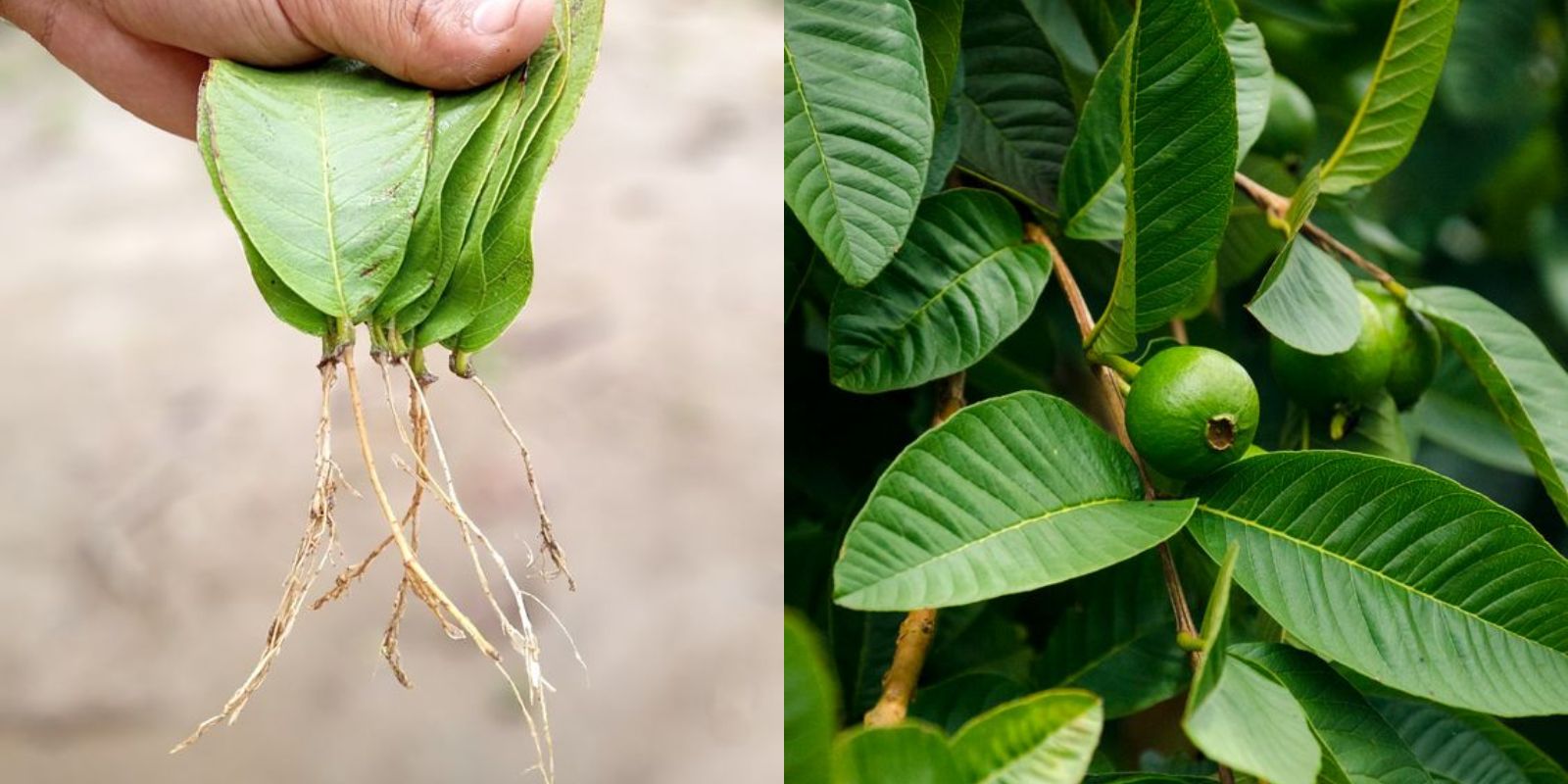Guava trees, native to tropical regions, are prized for their sweet, fragrant fruits and versatile uses. Traditionally, guava trees are propagated through seeds or cuttings, but an intriguing and lesser-known method involves using guava leaves. This technique, though more challenging, offers a unique way to cultivate guava trees at home, allowing gardeners to propagate specific varieties and maintain desired traits. In this article, we’ll explore the detailed process of growing guava trees from leaves, providing you with all the necessary steps and tips to successfully nurture these tropical treasures.
Introduction
Guava (Psidium guajava) is a tropical fruit tree that thrives in warm climates. The fruit is packed with nutrients, including vitamin C, fiber, and antioxidants, making it a popular choice for health-conscious individuals. Growing guava trees from seeds can result in variations in fruit quality, as seeds do not always produce true-to-type plants. Propagating guava trees from leaves, although less common, allows gardeners to clone the parent plant, ensuring consistent fruit quality and characteristics. This method requires patience and care, but the reward of cultivating your own guava trees is well worth the effort.
Selecting Healthy Leaves
The first step in growing guava trees from leaves is selecting the right leaves from a healthy, mature guava tree. The leaves should be:
- Mature and Healthy: Choose leaves that are fully developed, free from disease, and not damaged by pests. Young or immature leaves may not have enough stored energy to support root growth.
- Free from Pests: Inspect the leaves for signs of insect infestation or fungal infection. Only use leaves from a tree that is thriving and free from stressors.
Cut the selected leaves with a small portion of the stem (petiole) attached. The petiole is the part that connects the leaf to the stem and is crucial for the propagation process.
Preparing the Leaves
Once you have selected the healthy leaves, it’s time to prepare them for planting:
- Trim the Leaves: If the leaves are large, trim them to reduce water loss. This is done by cutting off about one-third of the leaf surface area, which helps prevent excessive transpiration and drying out during the rooting process.
- Dip in Rooting Hormone: To encourage root development, dip the cut end of the petiole in rooting hormone powder. Rooting hormones contain auxins, which are plant hormones that promote root growth. This step increases the chances of successful propagation.
Planting the Cuttings
After preparing the leaves, it’s time to plant them:
- Choose a Pot and Soil: Select a small pot with drainage holes and fill it with a well-draining potting mix. A mix of peat, perlite, and sand works well for this purpose. Good drainage is essential to prevent waterlogging and root rot.
- Plant the Leaves: Insert the petiole and base of the leaf into the soil, ensuring that the leaf blade is above the surface. Firm the soil around the petiole to secure the leaf in place.
- Cover the Cuttings: To create a humid environment conducive to root growth, cover the pot with a clear plastic bag or a plastic dome. This helps retain moisture and warmth, mimicking a greenhouse effect.
Maintaining Moisture and Warmth
Proper care and attention are crucial during the rooting phase:
- Watering: Keep the soil consistently moist but not waterlogged. Overwatering can lead to fungal issues and rot. Use a spray bottle to mist the soil lightly, ensuring it stays evenly moist.
- Humidity: High humidity is essential for the successful propagation of guava leaves. The plastic covering helps maintain humidity around the cuttings. Ventilate the cover occasionally to prevent mold growth.
- Temperature: Place the pot in a warm area with indirect sunlight. The ideal temperature range is between 75-85°F (24-29°C). Avoid direct sunlight, which can scorch the leaves and reduce humidity.
Monitoring Growth
The rooting process can take several weeks to months, depending on environmental conditions and the specific guava variety:
- Checking for Roots: After a few weeks, gently tug on the leaf to check for resistance, indicating root development. Be careful not to disturb the roots.
- New Growth: Successful propagation will result in new shoots emerging from the base of the leaf. This is a positive sign that the cutting has taken root and is beginning to grow.
Transplanting and Care
Once the guava cuttings have developed a strong root system and new growth is visible, they can be transplanted into larger pots or directly into the garden:
- Transplanting: Carefully remove the rooted cuttings from the pot and transplant them into a larger container with well-draining soil. If planting outdoors, choose a sunny spot with rich, loamy soil.
- Watering and Feeding: Water the young plants regularly, ensuring the soil stays consistently moist but not waterlogged. Fertilize with a balanced fertilizer every 4-6 weeks during the growing season to encourage healthy growth.
- Pest and Disease Control: Monitor the plants for pests and diseases. Common issues include aphids, mealybugs, and fungal infections. Use appropriate treatments if necessary, such as insecticidal soap or fungicides.
Conclusion
Growing guava trees from leaves is a fascinating and rewarding process that allows gardeners to clone specific varieties and maintain desired traits. While it requires patience and careful attention, the result is a thriving guava tree that can produce delicious fruits for years to come. By following the steps outlined in this guide—selecting healthy leaves, preparing and planting the cuttings, maintaining moisture and warmth, and monitoring growth—you can successfully propagate guava trees from leaves. This unique propagation method offers a creative way to expand your garden and enjoy the tropical delights of home-grown guava.
Start your guava-growing journey today and experience the satisfaction of nurturing these wonderful trees from leaf to fruit!

